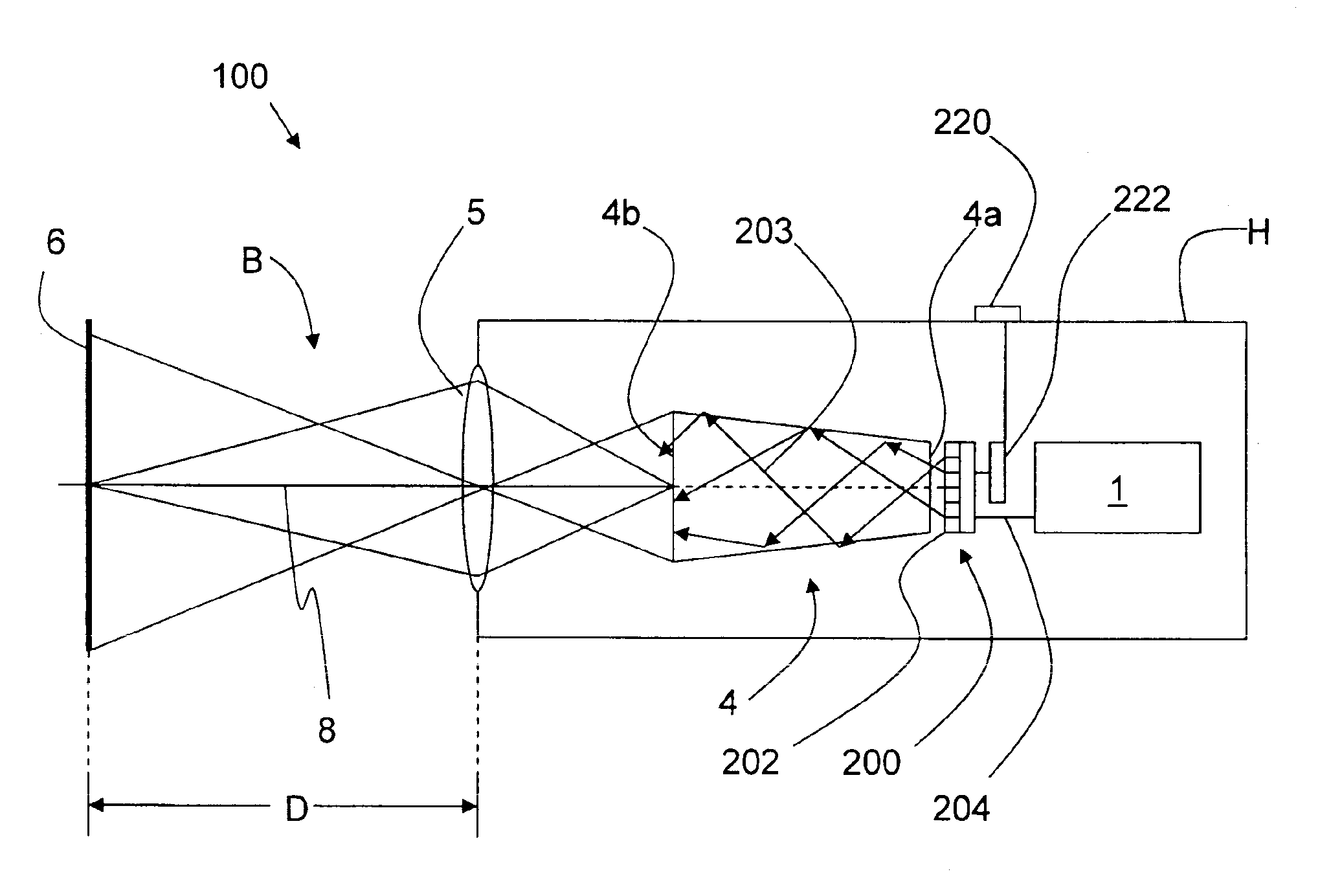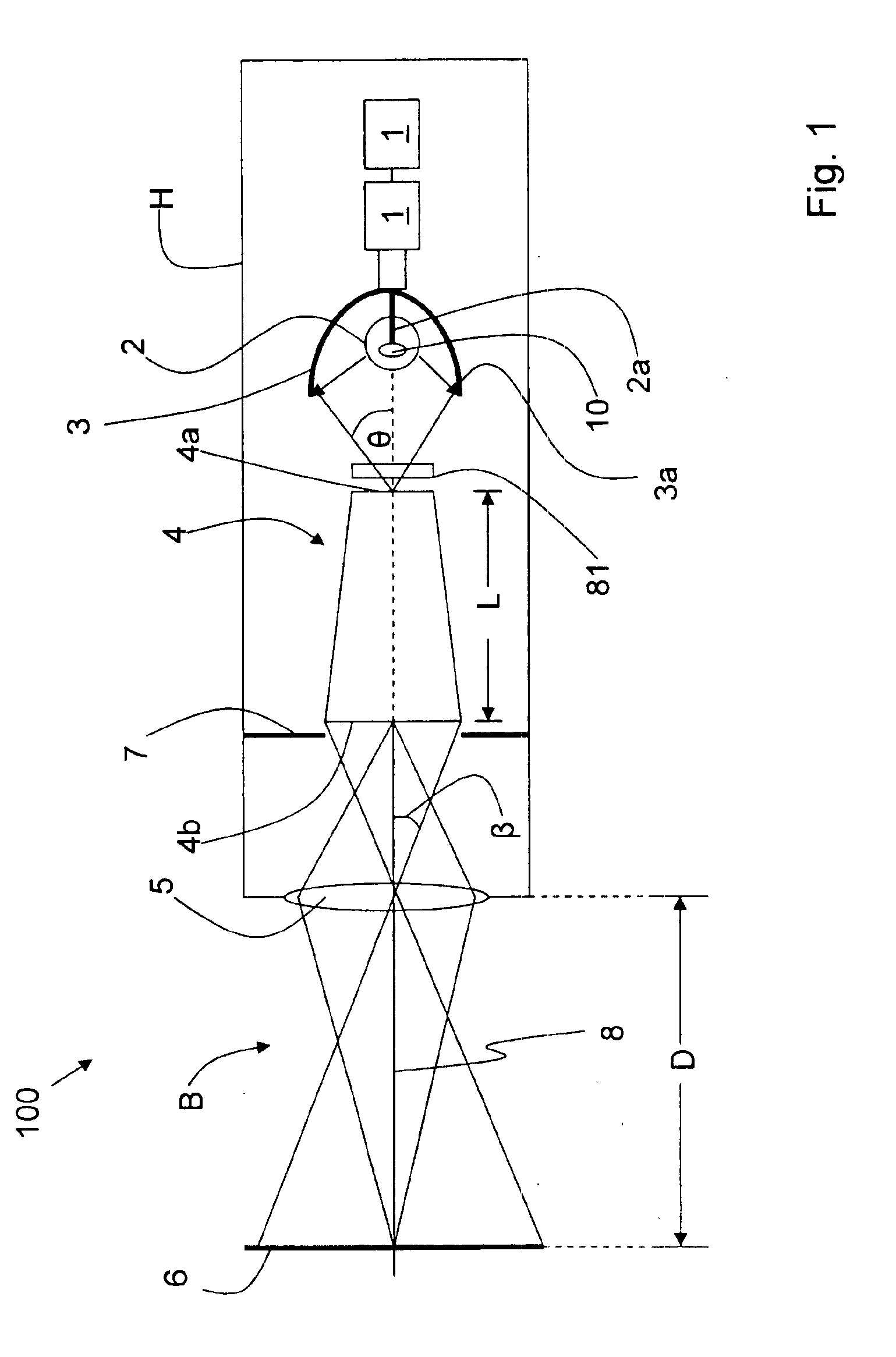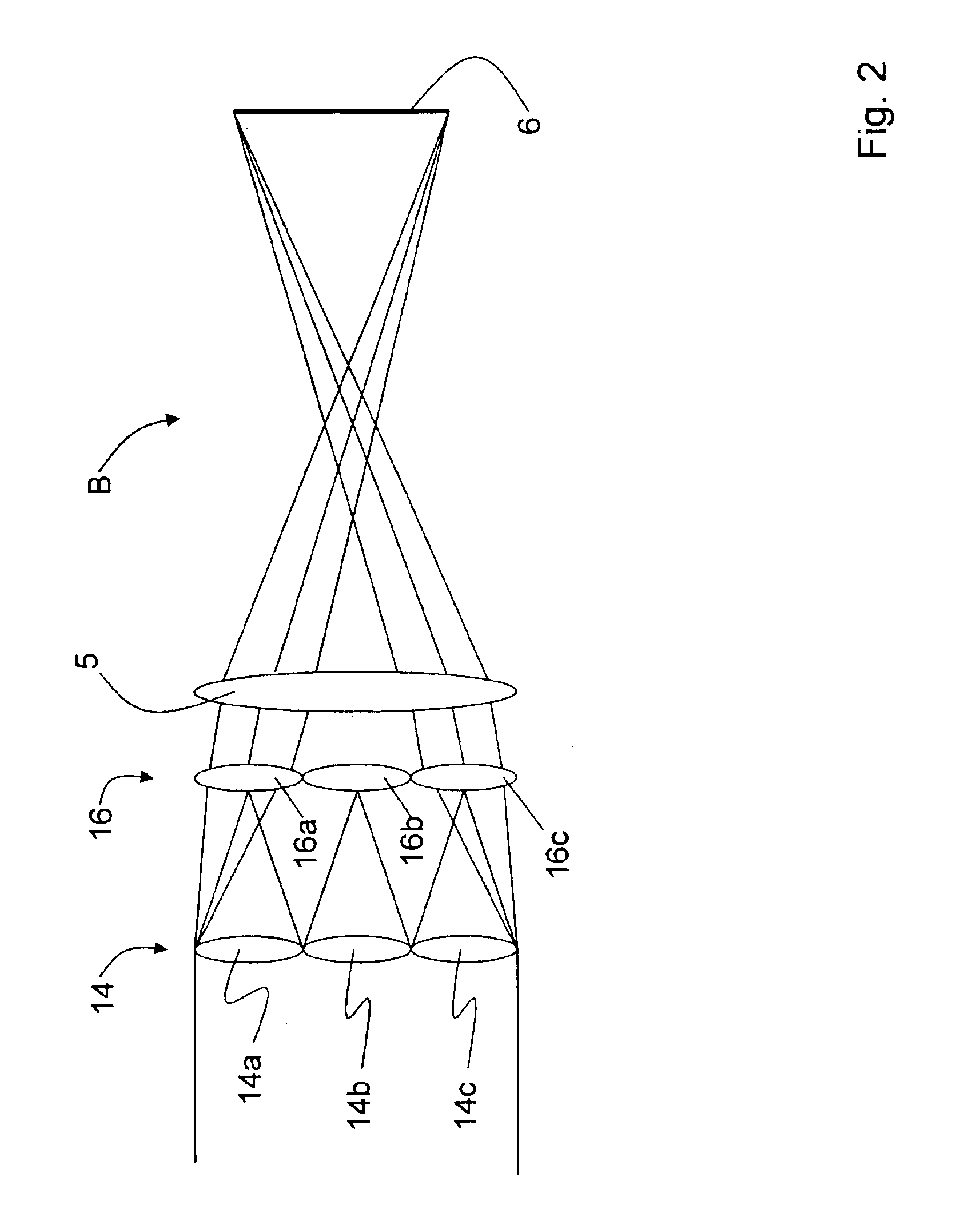Compact work light with high illumination uniformity
a work light and uniform illumination technology, applied in the field of work lights, can solve the problems of large variation in light spilling out to a wide area, and high intensity of the circular spo
- Summary
- Abstract
- Description
- Claims
- Application Information
AI Technical Summary
Benefits of technology
Problems solved by technology
Method used
Image
Examples
Embodiment Construction
[0028]For the purposes of explanation, specific embodiments are set forth to provide a thorough understanding of the present invention. However, it will be understood by one skilled in the art, from reading the disclosure, that the invention may be practiced without these details. Moreover, well-known elements, process steps, and the like, and including, but not limited to, optical components, electronic circuitry components and connections, are not set forth in detail in order to avoid obscuring the disclosed system.
[0029]The preferred example embodiment of the flashlight invention 100 is shown in FIG. 1. Flashlight 100 includes a housing H which serves to enclose and / or support and protect (i.e., “house”) the various elements making up the flashlight as described below. Two ordinary flashlight batteries 1 are shown in flashlight 100 of FIG. 1, but any number of batteries (i.e., one or more), or types of batteries, or any applicable power source will work as a power source for a co...
PUM
 Login to View More
Login to View More Abstract
Description
Claims
Application Information
 Login to View More
Login to View More - R&D
- Intellectual Property
- Life Sciences
- Materials
- Tech Scout
- Unparalleled Data Quality
- Higher Quality Content
- 60% Fewer Hallucinations
Browse by: Latest US Patents, China's latest patents, Technical Efficacy Thesaurus, Application Domain, Technology Topic, Popular Technical Reports.
© 2025 PatSnap. All rights reserved.Legal|Privacy policy|Modern Slavery Act Transparency Statement|Sitemap|About US| Contact US: help@patsnap.com



